Majalis Ghorfat Umm Al Sheif - History Revisited |
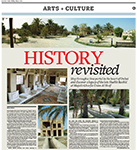 |
<<Click to see original |
Brian Salter steps through a time portal in the heart of Dubai and discovers a legacy of the late Sheikh Rashid ….

Even despite the recent slow down in Dubai’s real estate construction boom, it is often difficult for people to remember just how much the place has changed in the past few years. A trip to the very heart of Jumeirah could, however, prove to be a welcome reminder to the majority of Dubai’s residents, many of whom are totally unaware that just one dirham could be their passport to experience what life was like half a century ago.
Majalis Ghorfat Umm Al Sheif is one of the most important historical buildings in Dubai; yet to see the cars whizzing past the old brown sign pointing into Jumeirah’s suburbs, one would wonder how many of their occupants would know that.
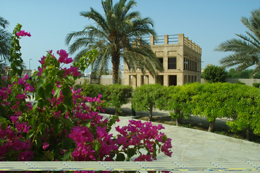
Built in 1955, it was the summer residence of the late Sheikh Rashid Bin Saeed Al Maktoum, father of today's modern city, and whose vision pulled Dubai from relative obscurity towards the 21st century. It was his idea to open a new port at Jebel All, ignoring opposition from his advisers and it was he who saw to the dredging of the Creek, allowing for the passage of bigger boats and further boosting trade in the city.
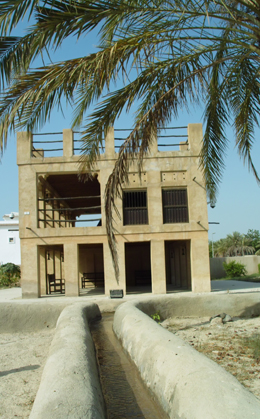
Although it has been extensively restored, the building retains much of its old charm. Apart from being the summer retreat of the royal family, the majalis used to be an important meeting house for the people in the run up to independence. Sheikh Rashid presided over these meetings in the main hall which was especially adapted to provide respite from the summer heat by way of large shuttered windows.
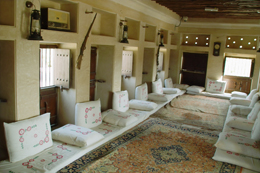
Majalis Ghorfat Umm Al Sheif was constructed - in the traditional style of the period before the oil boom changed the entire face of the region - of gypsum and coral rocks as well as date palm fronds, and was named after the Umm Al Sheif fishing banks, famous for their natural pearls. Built over two stories in a 14m x 5.7m building, it has many air inlets in its walls and is surrounded by the remains of a date palm plantation.
The ground floor comprises an open liwan (or terraced verandah) with a storeroom on the northern flank beside it, and an outside staircase leads to the second storey, Here we find a wide liwan leading in to the main majalis room, which is one of the most delightful examples of its kind, looking much as it would have done in Sheikh Rashid's day. The building was used temporarily as a police station in the 1960s, but it was extensively restored back to its former elegance.
Although the Ghorfat Umm Al Sheif used to be a date palm farm, the traditional garden within its grounds has been much added to by the Dubai Municipality, although it is none the worse for that. Featuring not just palm trees, but lemon and olive trees as well, there are winding falaj irrigating channels that give out the soothing sound of running water as the visitor strolls lazily through the grounds. Visiting birds, too, appreciate the calm serenity and can be seen paddling in the running water and flitting from palm to palm.
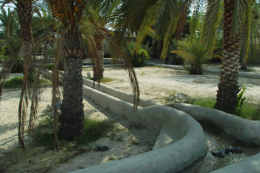
All in all, it’s an absolute gem of a place, both totally out of character with the rest of the area, yet fitting in beautifully with its surroundings.

To get there, take the Jumeirah Road northbound from the Burj Al Arab towards Deira; and look out for the brown tourist sign pointing to your right, up Street 17, just before you reach JumeirahBeachPark. Open seven days a week, entrance to the grounds is just 1 dirham.
